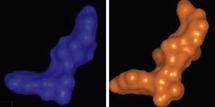Scientists mine drugs database for new diabetes treatment

(PhysOrg.com) -- Scientists funded by the Biotechnology and Biological Sciences Research Council have harnessed a new drug discovery tool to identify a new player in the body's insulin secretion process. This finding could spark a completely new class of drugs to treat type 2 diabetes.
In work published today (22 February) in Nature Chemical Biology researchers at the University of Oxford explain how they have exploited new technology to create a cheap and efficient method of drug discovery that will allow small academic labs to search a large database of drugs to find treatments for diabetes and many other diseases. They have used this new method to identify a small molecule which they are using to understand how insulin is secreted in response to increases in blood sugar.
Lead researcher Dr Grant Churchill said: "A lot of diseases are caused by problems with important proteins within cells. We need to find small molecules that change the function of these proteins both to discover how they work and in addition because these small molecules may also work as treatments for disease. The approach we have developed allows us to do this much more quickly and cheaply than many of the current methods. Ultimately this will speed up the process of getting better treatments into the clinic for patients."
Starting with a natural chemical and systematically modifying its chemical structure is a proven technique and common drugs such as beta-blockers and anti-histamines were discovered this way. However, these discoveries involved lengthy chemical syntheses starting with the natural chemical (adrenalin and histamine respectively).
"Our method also begins with the natural chemical but rather than modifying it with a time-consuming and expensive chemical syntheses conducted by a team of chemists, ours uses computers to identify corresponding small molecules for research and medicine. The major difference is that we have linked the computational methods commonly used by pharmaceutical companies to a freely available database of 5 million existing compounds - the ZINC database. This means we cut out a hugely time consuming and financially intensive part of the process, which is difficult for small academic labs to do," Churchill said.
The team has tested their method by successfully identifying a small molecule called Ned-19. This molecule was found after information about the natural chemical NAADP was entered into the computer system and cross referenced with the ZINC database. In collaboration with scientists at the University of Southampton, led by A.Ganesan, Ned-19 was prepared on a larger scale and separated. Further experiments were carried out with these compounds to confirm the activity of Ned-19. Using Ned-19 in experiments they have discovered that NAADP plays a crucial role in insulin secretion and therefore represents a brand new target for diabetes drugs.
Churchill continued: "Unfortunately, asking someone to take Ned-19 would actually give them diabetes! But now that we know how important NAADP is we can start to look for drugs that work with NAADP to increase insulin secretion rather than decrease it. In fact, we have colleagues who are already working on this using our tool."
Professor Douglas Kell, BBSRC Chief Executive said: "This is great news for our community of researchers and will provide a powerful tool for research in the future. This discovery about insulin secretion shows how important it is to have centrally held data repositories that are free to access. Such sharing of data and information can have really significant impact, right across the board."
More information: Nature Chemical Biology: doi: 10.1038/nchembio.150
Source: Biotechnology and Biological Sciences Research Council














